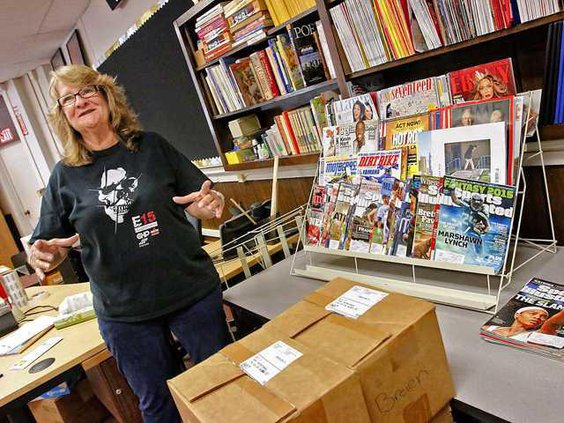There was a time if a high school student needed to check out a book from the school library for research on a history paper or an English assignment, they’d have to physically go to the library.
And if they were lucky they’d be able to find a copy of the book that they wanted.
The Manteca Unified Going Digital initiative is changing that.
The schools are moving into blended libraries, mixing books with digital resources.
The high schools now have Overdrive. It is a digital library that provides open access to e-books from their school-issued tablets.
There is an icon on their Panasonic 3E allowing quick and easy access.
“Students can check out a book any time they chose,” noted Clara Schmiedt, Senior Director of Secondary Education, in an email.
Having a digital device in the hands of every student means the district now has the option of acquiring digital textbooks.
Last school year, the district adopted a new English textbook in digital format. That decision was made by teachers as part of the formal adoption process as they favored a digital textbook over the conventional textbook.
Schmiedt pointed out “there are many more important components when adopting a curriculum.” She noted, as an example, curricular content must align to standards, the level of rigor, and students’ resources.
“These outweigh whether we will buy a digital book or not,” Schmiedt noted.
When used with the OneNote program on the tablets students can make notes as they go much like underlining key sections or writing in the margins of a book without physical doing so. Those notes can then be quickly edited and arranged in a manner that helps each individual student grasp concepts or points in the best possible manner for them.
District Superintendent Jason Messer noted that for now there isn’t much of a cost difference between digital and printed textbooks. Whether that change happens has more to do with breaking down the consortium that controls almost all public education and university textbooks in conjunction with boards that establish educational standards.
“There is no reason why a college textbook should cost $125,” Messer said.
Messer noted there are other advantages to digital textbooks as they can quickly be updated without having to buy new books, they can get tattered or rain damaged, they don’t get lost, and they don’t add weight to backpacks.
District librarian Ann Steiner is currently meeting with a committee of teachers and administrators to devise a five-year plan for high school.
That includes creating educational spaces in libraries such as a “makerspace.”
Makerspaces are do-it-yourself areas where students can gather to learn, create, and invent.
The makerspaces in libraries often have 3D printers, hardware and craft supplies, specialized software, electronics, and more.
The kindergarten through sixth grades has access to MyOn to read books online. Like Over Drive, MyOn offers research sites that are vetted and ad free.
The K-8 math program currently has a digital component that teachers and students use in class to supplement the printed textbook.
The district has set aside $1.3 million this year for adoption of a K-8 Language Arts text. The state as early of November will provide a list of adopted texts. School staff will then explore the options and ultimately make a recommendation to Messer who in turn will take it to the school board possible adoption in April.
The process also includes a public review and comment period.
The goal is to have the new K-8 language arts text in place for the 2016-17 school year.
BLENDED LIBRARIES
Manteca Unified marrying traditional, digital



